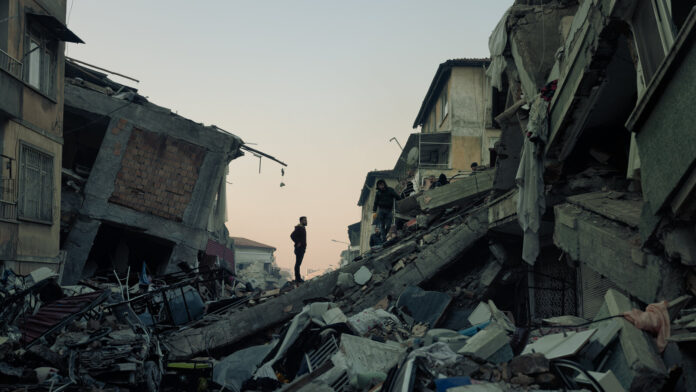As Alabamans awoke to news of the state’s first earthquake of 2024 this Thursday, it served as a small reminder of the very real – albeit infrequent – seismic risk the region faces. Measuring 2.3 magnitude, the quake itself caused no damage, with most residents sleeping through the light trembling. Yet while we may tempt fate by downplaying these benign rumbles, history warns much stronger quakes have rocked the Tennessee Valley before, and likely will again.
Beyond Alabama, risk assessments across the country may also be falling short, as highlighted by a new study proposing an alternative framework for quantifying earthquake impact. Currently, wealthy nations with strict building codes like the US base risk estimates primarily on potential property damage. However, when measuring relative impact on countries globally, the number of lives lost tends to better capture how destructive an earthquake is to a nation – regardless of its wealth or infrastructure.
Dubbed the “earthquake fatality load” (EQFL), the proposed formula compares earthquake deaths to total population, revealing how severely different countries are affected. The analysis spanned 35 nations over 500 years, accounting for 97% of all quake casualties since 1500 AD. Researchers found that although countries like Japan and China suffer frequent, damaging tremors, smaller and less developed nations often endure a disproportionate share of fatalities relative to their populations.
Ecuador, Lebanon, Haiti, Turkmenistan, Iran, and Portugal topped the list, having weathered the highest EQFL per capita over the centuries. Study author Max Wyss suggests that while property loss garners attention, the real earthquake disaster lies in human casualties – which should therefore be the priority metric in preparing for and responding to seismic events.
ManyFactors Influence Earthquake Impact
There are numerous interacting factors that determine earthquake severity, including magnitude, depth, proximity to population centers, time of occurrence, infrastructure resiliency, emergency response capabilities, and more. However, the study reasonably contends that while a powerful quake causing billions in damage grabs headlines, hundreds or thousands of preventable deaths ultimately leave the deepest scar on a nation.
And when comparing relative impact between countries, property value proves a poor proxy. The 1989 Loma Prieta quake registered a hefty $10 billion price tag, but resulted in just 63 deaths thanks to strict California building codes. Contrast that with Haiti’s devastating 2010 quake, which caused around $8 billion in damage but killed a staggering 316,000 – over 5% of the population. From a resilience standpoint, the number of bereaved families and ongoing struggle of survivors connotes the true scope of the disaster.
Wealth Can Distort Risk Perception
Wealthy nations rightly invest heavily in state-of-the-art infrastructure to minimize quake harm, exemplified by Japan’s or California’s rigorous building codes, early warning systems, and rapid emergency response. However, residents in these areas may lose sight of the persistent underlying threat. In developed regions like the Tennessee Valley, the rare jolt draws curiosity more than caution, as few consider a significant earthquake likely in their lifetimes.
But geologic time spans far exceed single lifespans or generations. While California’s last catastrophic quake was almost 30 years ago and North Alabama’s most damaging quake struck in 1933, the faults still harbor danger. Although risk in a given year may be extremely low, playing seismic roulette across decades racks up greater odds. Perhaps the true lesson is that readiness, not complacency, serves us best in earthquake country.
Re-evaluating Risk in Alabama
Despite mild shaking this Thursday that caused no harm, Alabama’s earthquake headline underscores the sporadic tremors that dot the region’s history. And while a 2.3 magnitude quake leaves little impression, North Alabama’s strongest quake on record in 2003 surpassed 4.5 magnitude. Widely felt through the Southeast with shaking strong enough to damage buildings in epicentral DeKalb County, the event hints at the potential of regional faults.
Earthquake prediction remains an imperfect science, but geologic evidence helps gauge long-term risk. Mapping fault distributions and ages of past movement can reveal which may be primed to unleash stored strain. In North Alabama, associations like the Southern Appalachian and Bahamas Fracture Seismic Zones present chronic background earthquake hazard, while the looming New Madrid Seismic Zone poses a more acute if distant threat of truly massive quakes.
Reality Check on Resilience
In 1933 when North Alabama last sustained consequential earthquake damage, the population and infrastructure scale paled compared to present day. While strict building codes now limit vulnerability of new structures, much of the built environment predates seismic provisions. And decades of sprawl have inflated exposure, evidenced by meteoric growth in seismic hotspots like East Tennessee.
When the next moderately damaging quake inevitably strikes, society’s reliance on interconnected systems not designed to withstand shaking could elicit serious secondary effects. Lifelines like power, communications, and transportation may suffer operational hiccups or outages, impairing disaster response and amplifying consequences.
We tend to perceive risk through the lens of personal experience, lulling residents into complacency as quakes fade from memory. But pushing the next big one further from mind doesn’t make us safer. Our best defense lies in acknowledging the inevitability of earthquakes, preparing to the extent possible, and remaining ever vigilant to the threat.





















